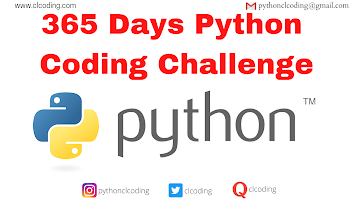Machine learning has evolved from academic theory to real-world necessity. Whether you're recommending products on e-commerce sites, filtering spam, detecting fraud, or even generating AI art—machine learning is everywhere.
In this landscape, "Python Machine Learning By Example (4th Edition)" by Yuxi (Hayden) Liu stands tall as a practical guide for anyone who wants to bridge the gap between theory and application.
🔍 What This Book Is About
This book is a hands-on guide to machine learning using Python, filled with real-world examples and best practices. Rather than overwhelming the reader with pure theory or mathematical derivations, Liu’s approach is refreshingly pragmatic—build something, learn by doing, and iterate.
With Python and libraries like Scikit-learn, TensorFlow, and XGBoost, you’ll walk through full machine learning pipelines, from data wrangling to model tuning and evaluation.
🧠 What You’ll Learn
Here's a glimpse of what the book covers:
✅ Core Topics:
-
Data preprocessing and exploratory data analysis (EDA)
-
Supervised learning: linear regression, decision trees, random forests, gradient boosting
-
Unsupervised learning: k-means, PCA
-
Deep learning with TensorFlow (DNNs and CNNs)
-
NLP: sentiment analysis with spaCy and Scikit-learn
-
Model evaluation and hyperparameter tuning with GridSearchCV
-
Reinforcement learning (a new addition to this edition)
-
Machine learning pipelines for production
Each chapter concludes with a project or mini-application, reinforcing the concepts in a meaningful way.
💡 Why This Book Stands Out
1. Project-Based Learning
Rather than teaching algorithms in isolation, Liu walks you through projects like:
-
Predicting housing prices
-
Building spam filters
-
Classifying text sentiment
-
Stock trading with reinforcement learning
This format makes the learning experience practical and immersive.
2. Real-World Relevance
The examples aren’t toy problems. The book uses real datasets and introduces you to problems you might actually encounter in industry.
3. Readable & Beginner-Friendly
You don’t need a PhD in data science to follow along. Some basic Python knowledge and a willingness to learn are enough.
4. Updates in the 4th Edition
-
Updated code to Python 3.10+
-
TensorFlow 2.x support
-
Integration of new ML techniques and best practices
-
Streamlined examples with performance-focused improvements
🧰 Tools & Libraries Used
-
pandas,numpy,matplotlib -
scikit-learn -
xgboost -
lightgbm -
tensorflow -
nltk,spaCy -
gym(for reinforcement learning)
You’ll not only learn the syntax but understand how to use each library effectively in context.
👨💻 Who This Book Is For
-
Aspiring data scientists and ML engineers who want to go beyond theory
-
Python developers looking to get into AI
-
Students in applied ML or data science courses
-
Professionals needing a reference book for solving common ML tasks
⚖️ Pros and Cons
| ✅ Pros | ⚠️ Cons |
|---|---|
| Clear, concise, and practical | Not heavy on theory or mathematical proofs |
| Real-world datasets and use cases | May feel fast-paced for total beginners |
| Updated for the latest Python ecosystem | Some examples could go deeper |
| Covers both ML & Deep Learning | TensorFlow-focused, limited PyTorch usage |
🏁 Final Verdict
If you’re looking for a battle-tested, example-driven guide to machine learning in Python, this book is a gem. It’s not just about “what” ML is, but “how” to use it effectively—with real code and real outcomes.
Rating: ⭐⭐⭐⭐☆ (4.5/5)
Whether you’re new to machine learning or want a reliable desk reference, Python Machine Learning By Example delivers solid value.











.png)






.png)
























0 Comments:
Post a Comment